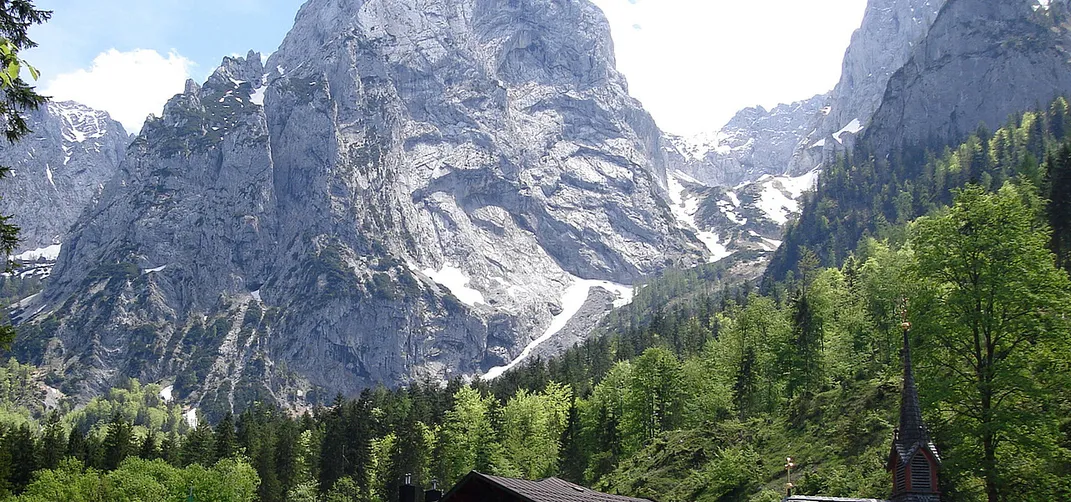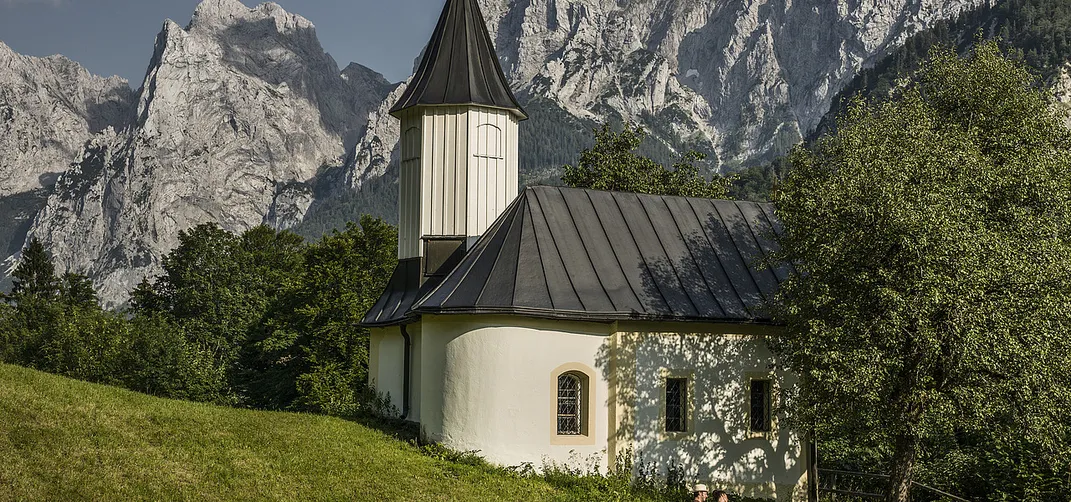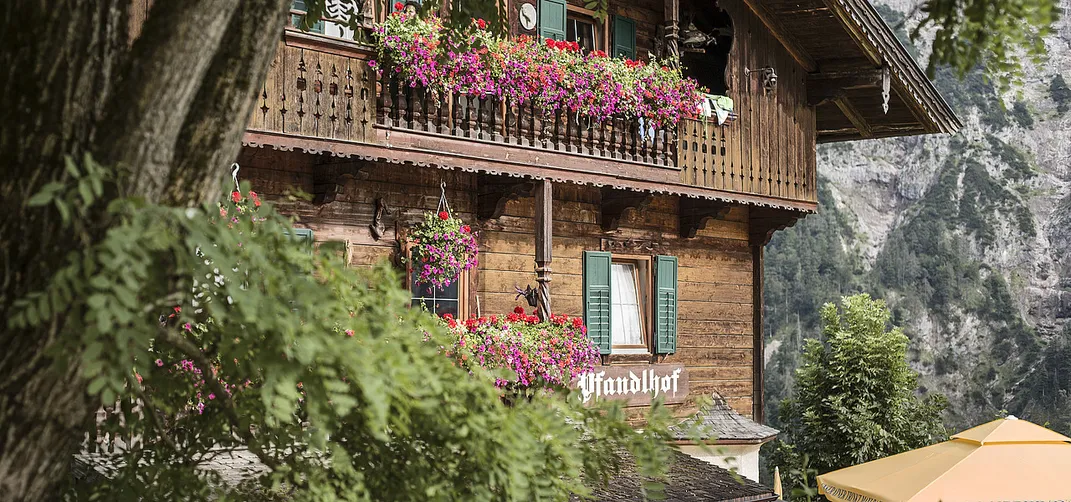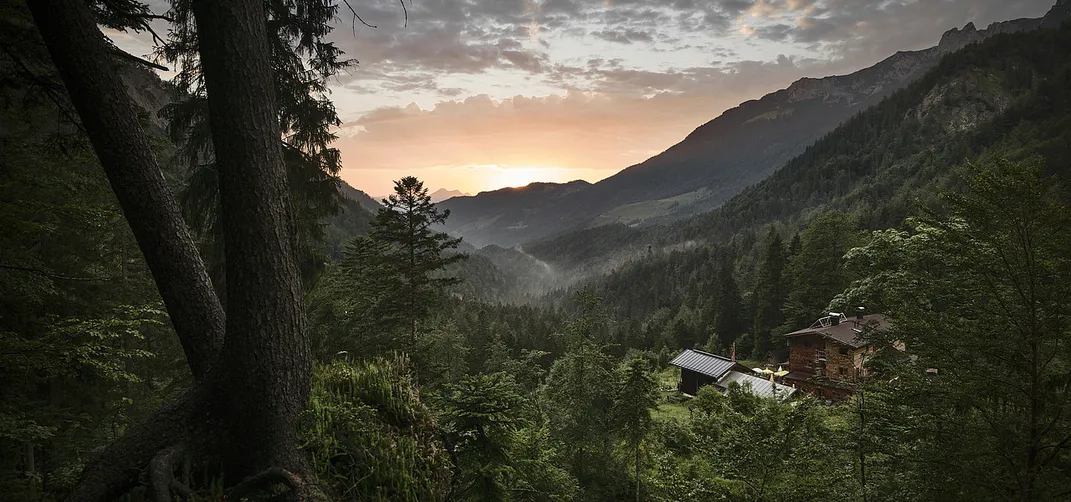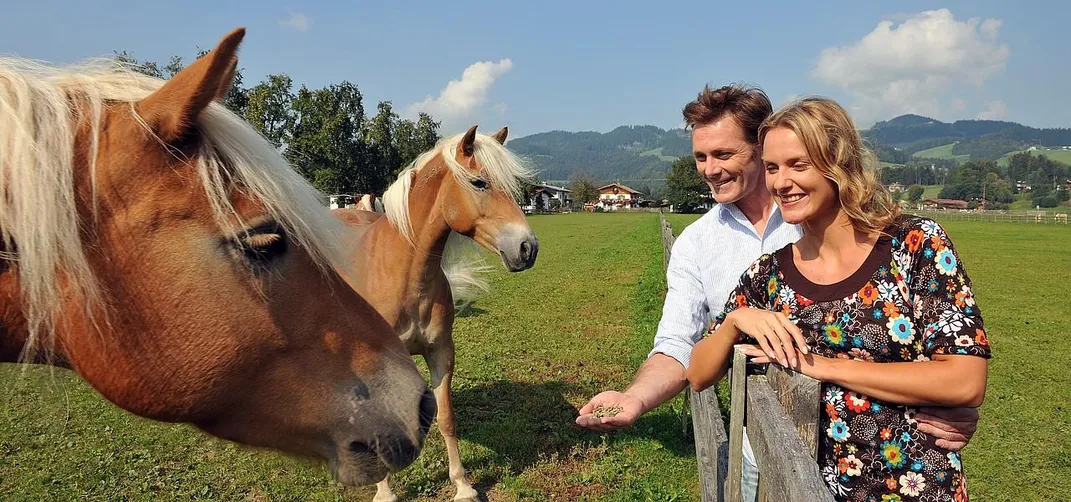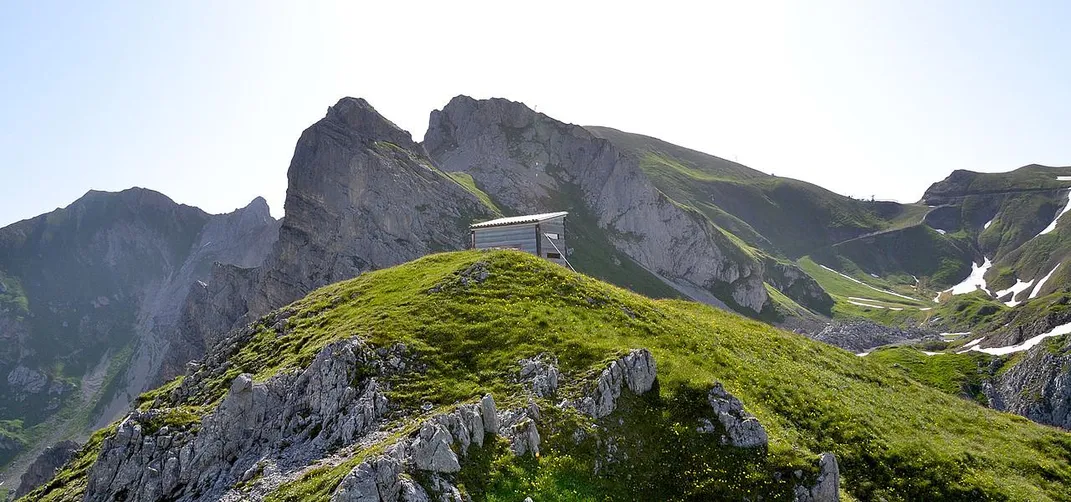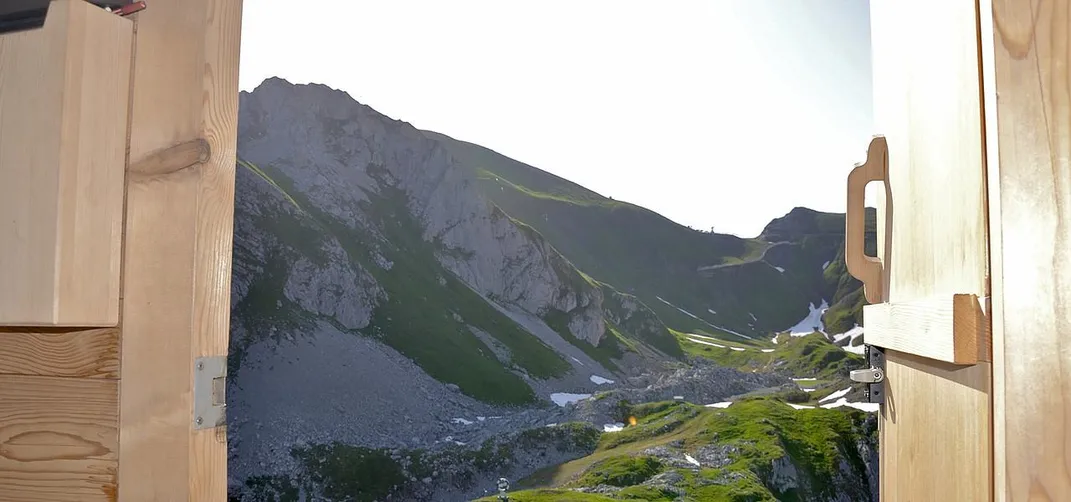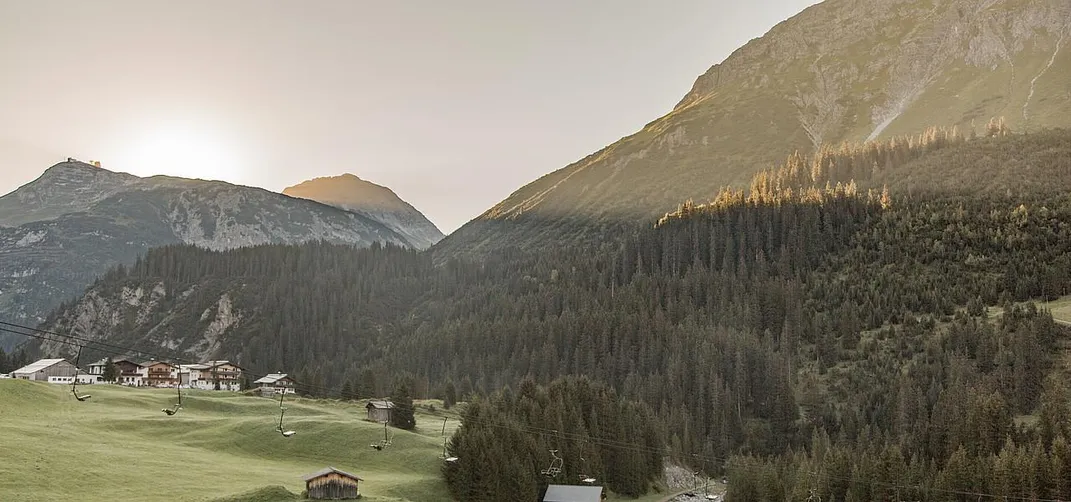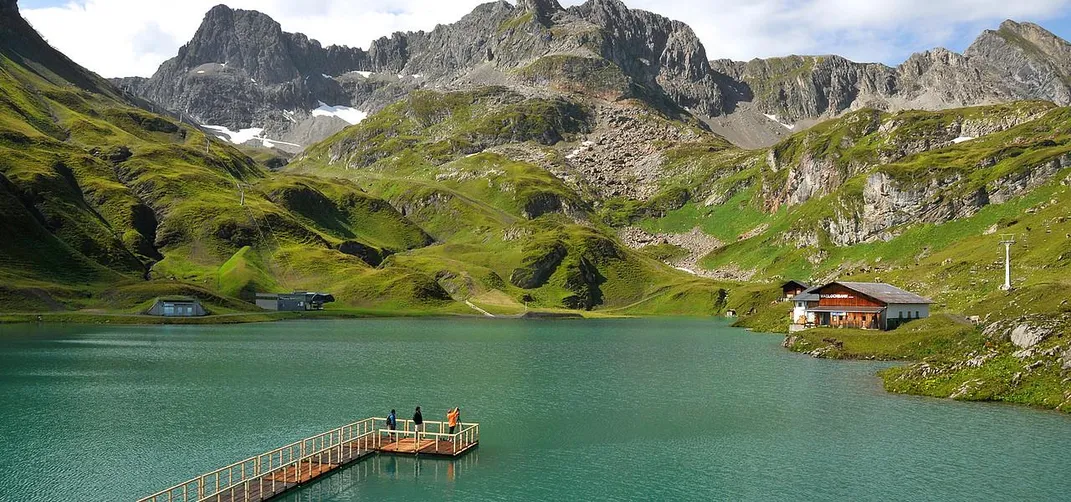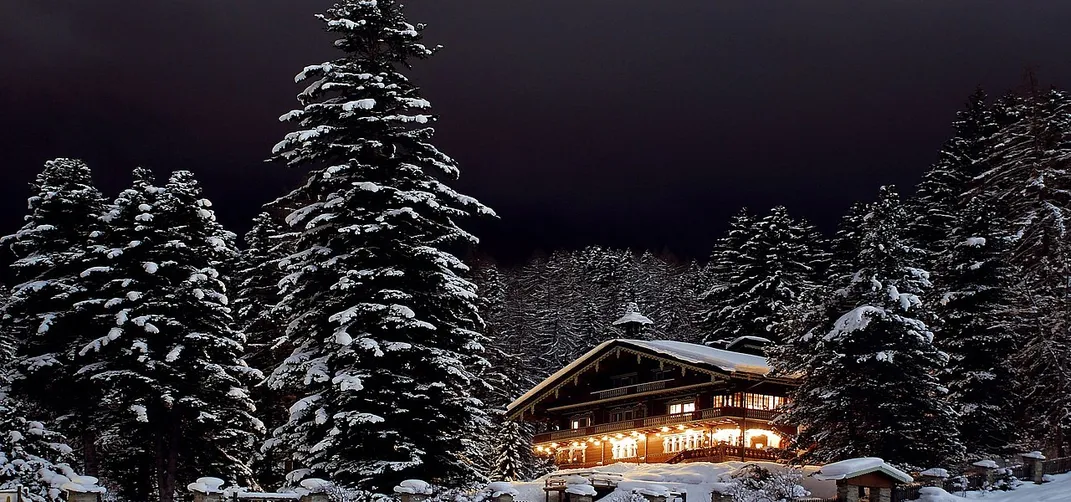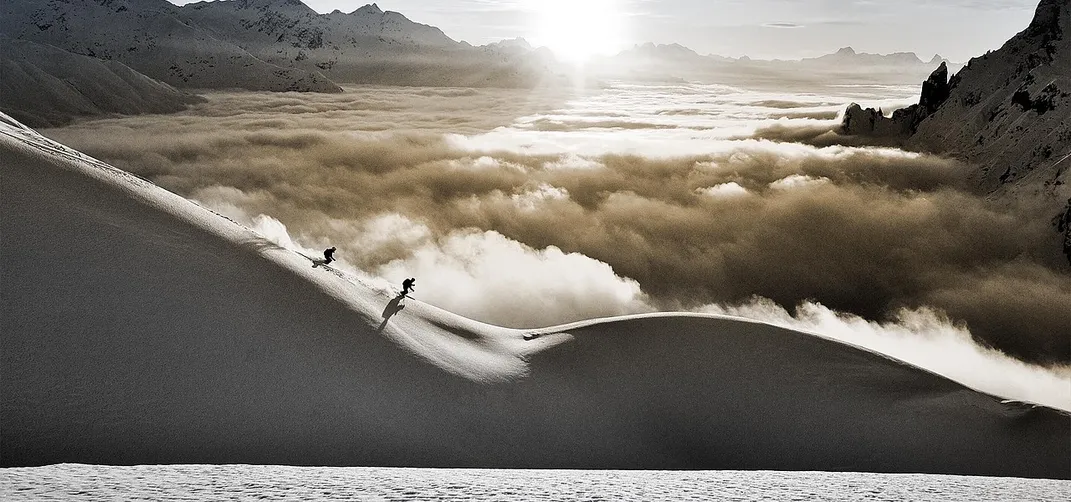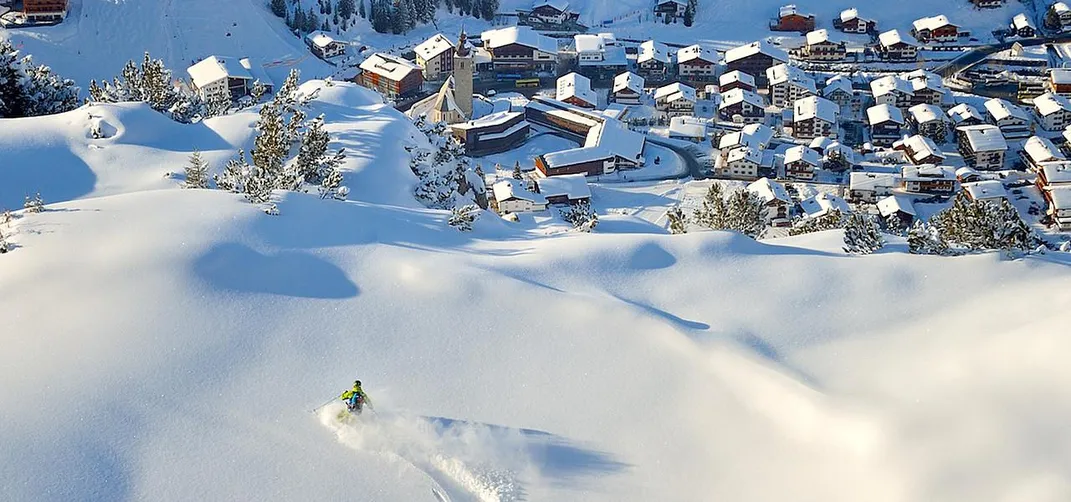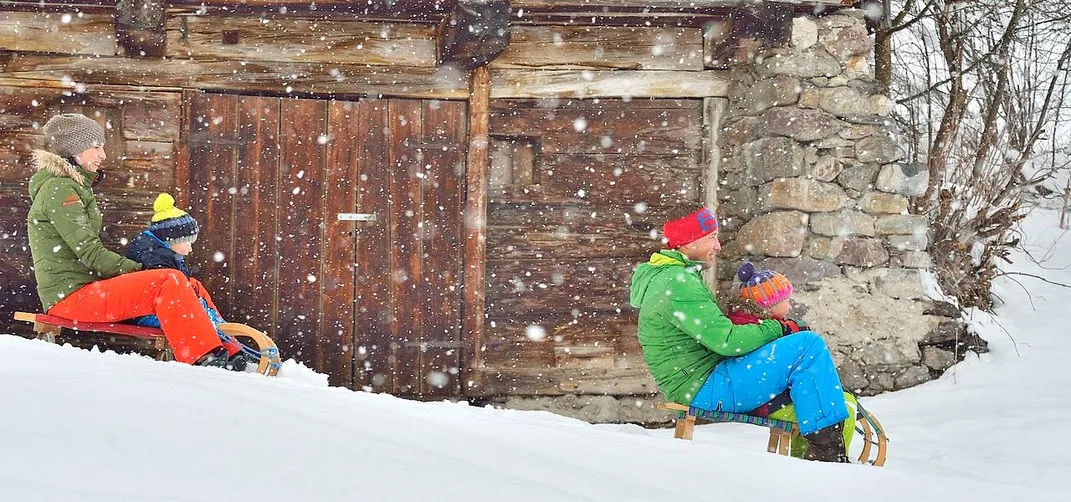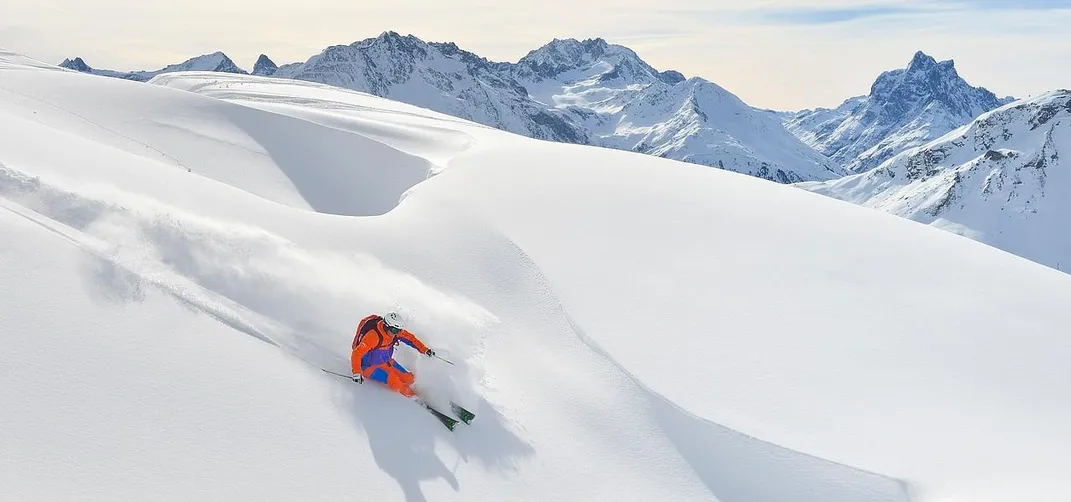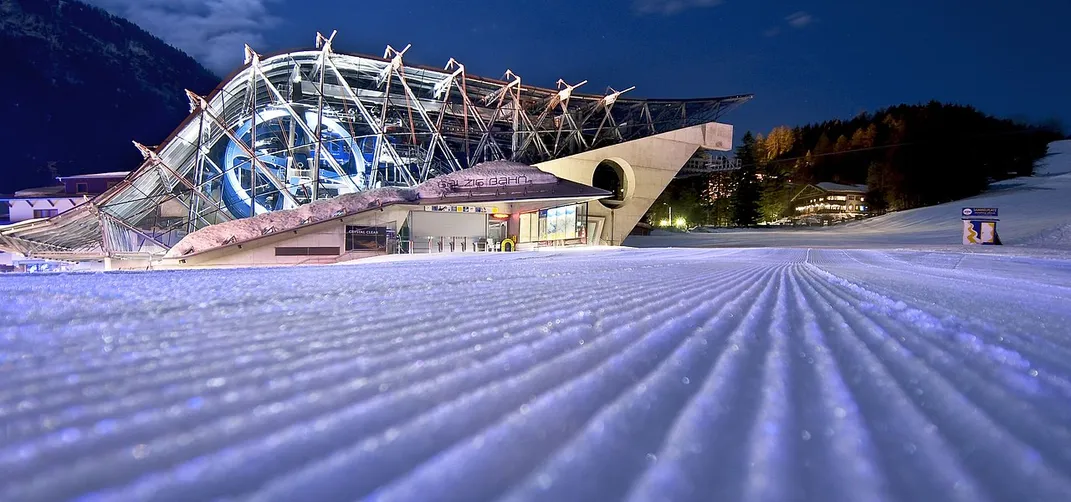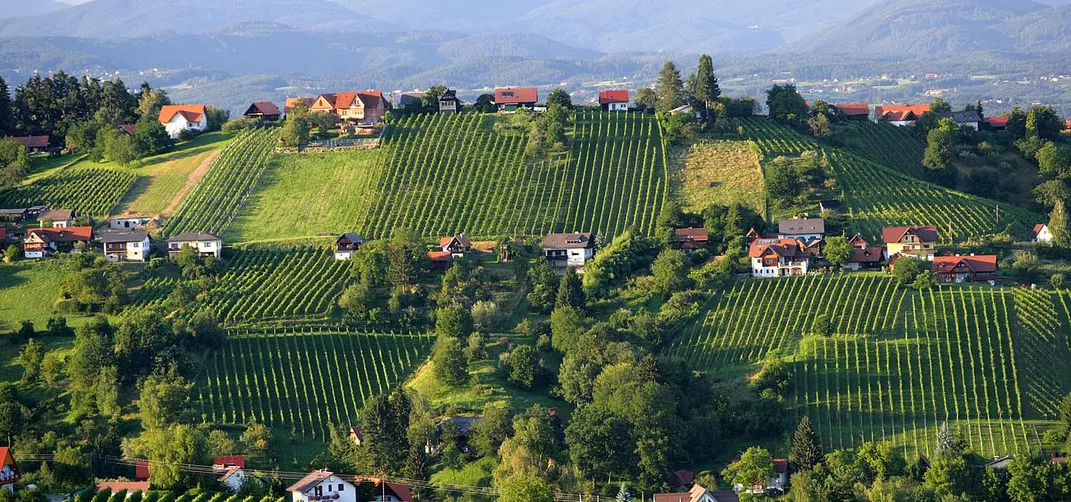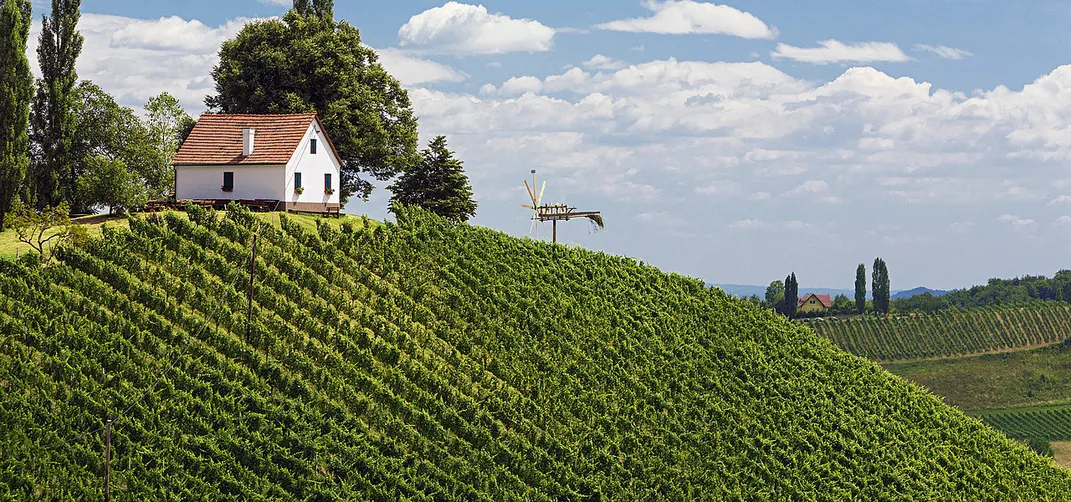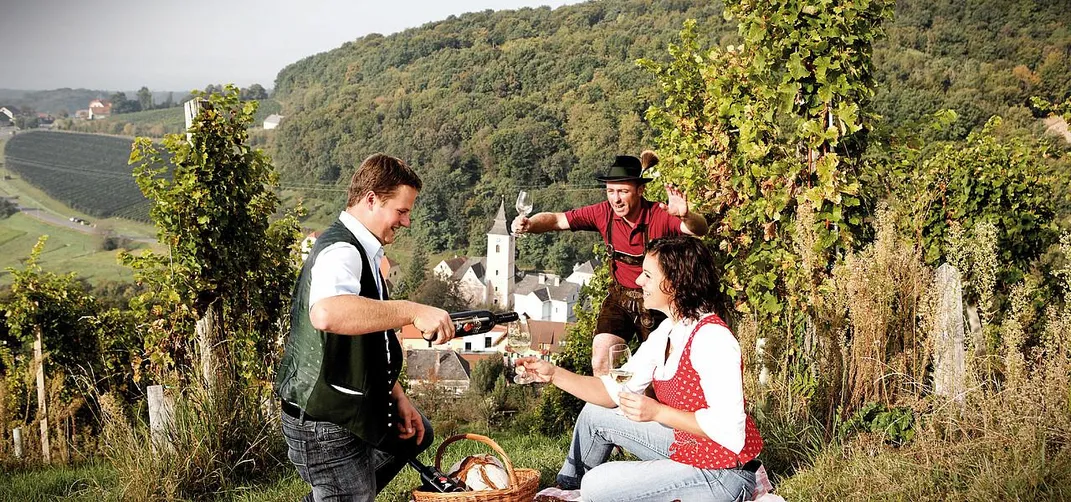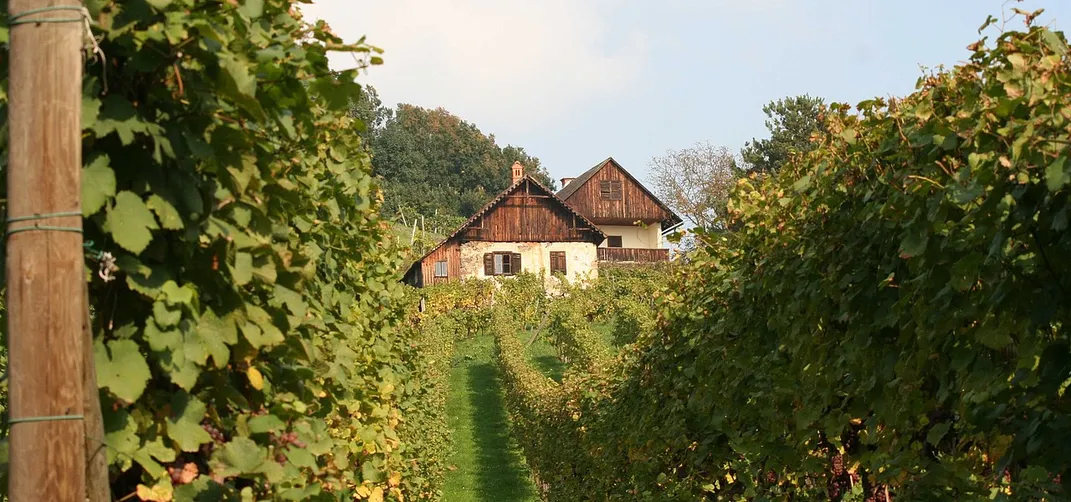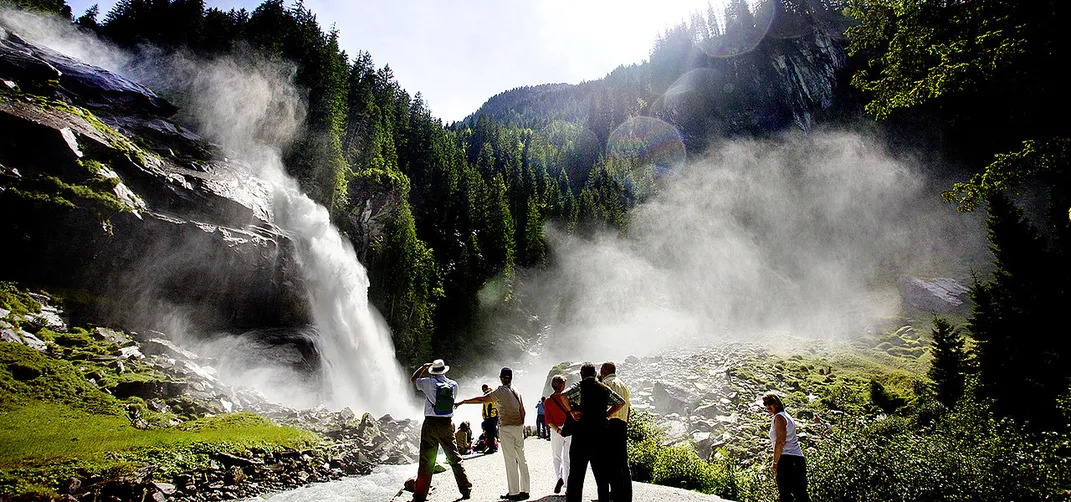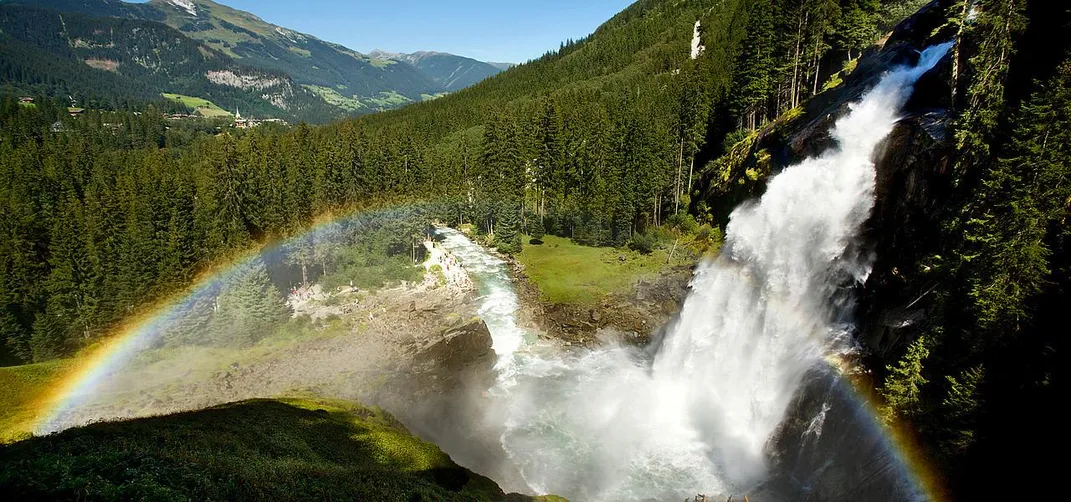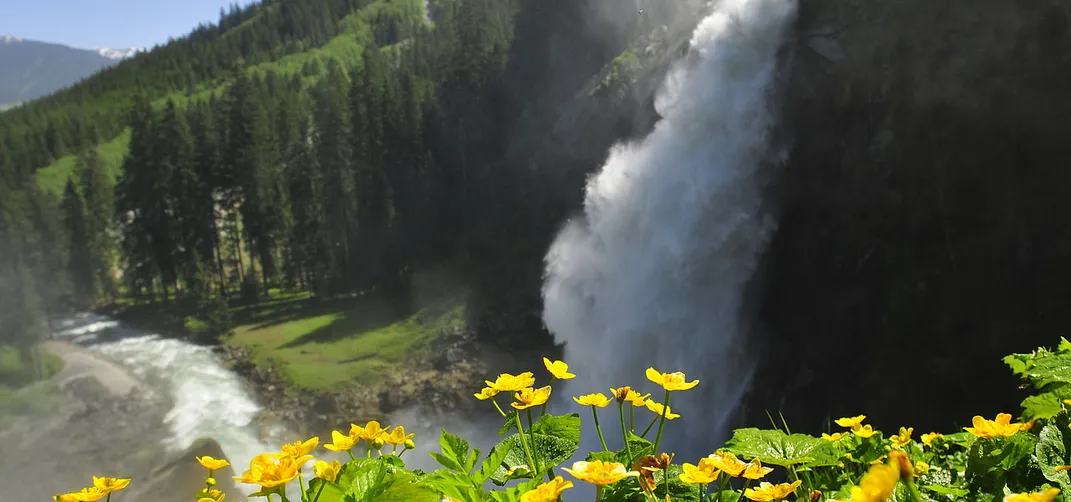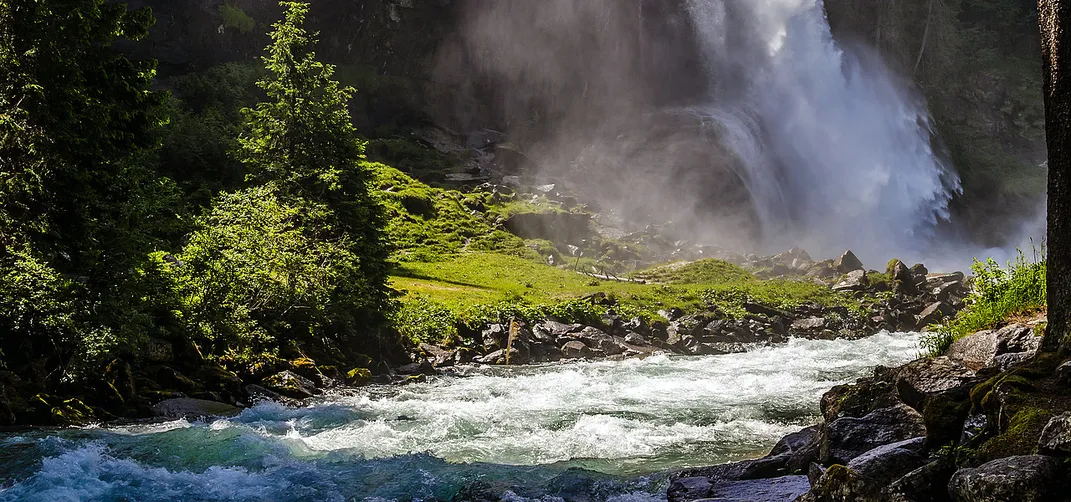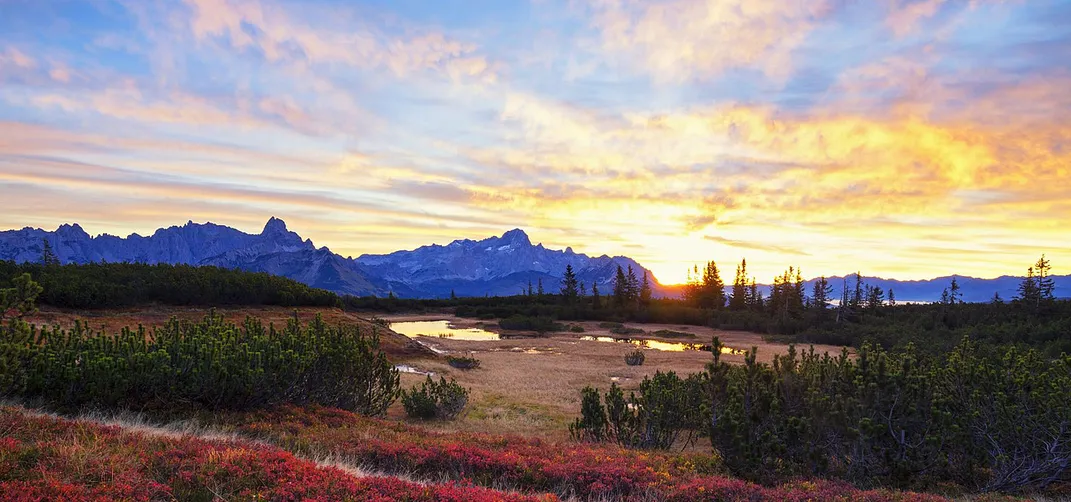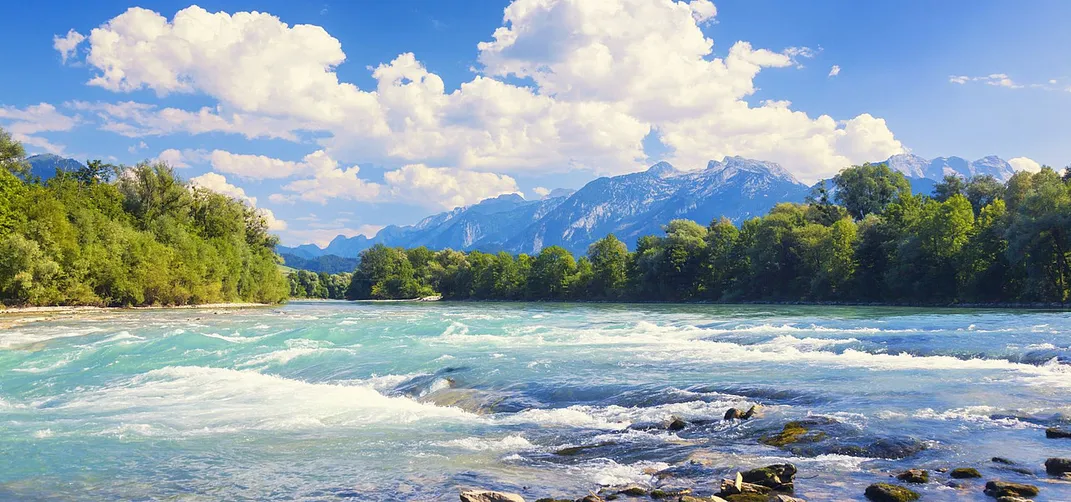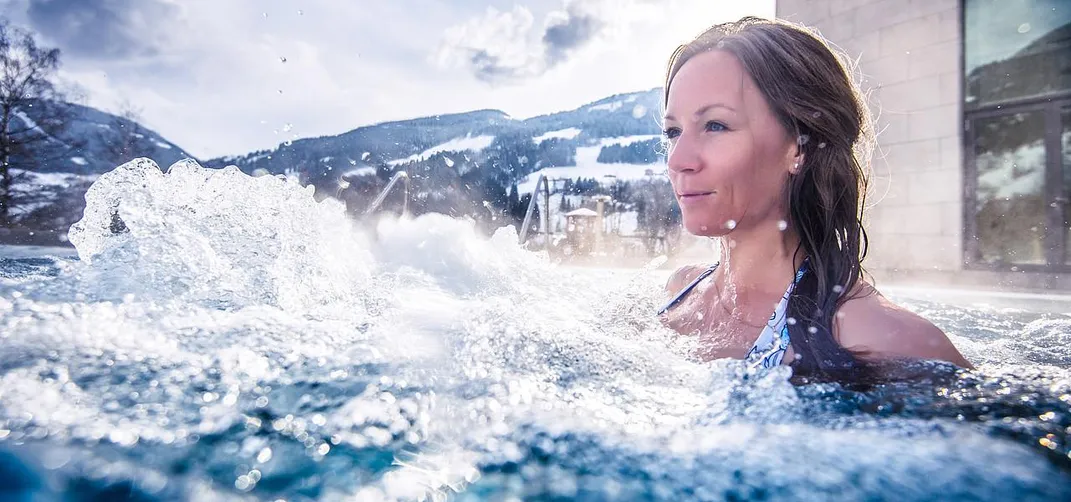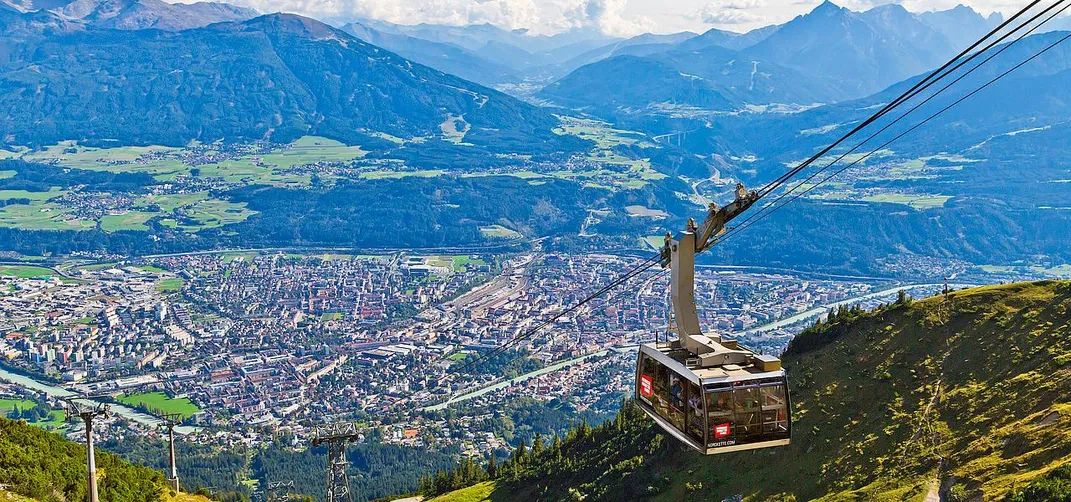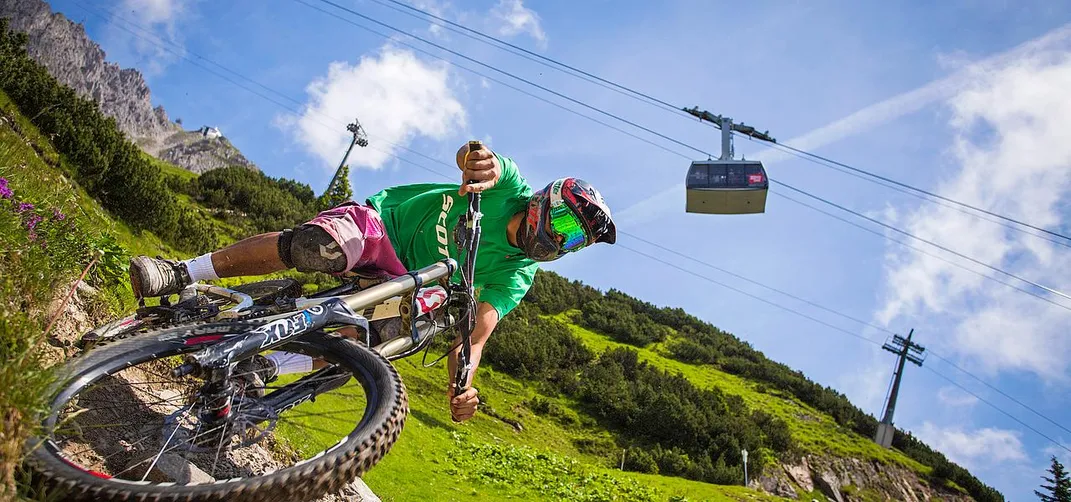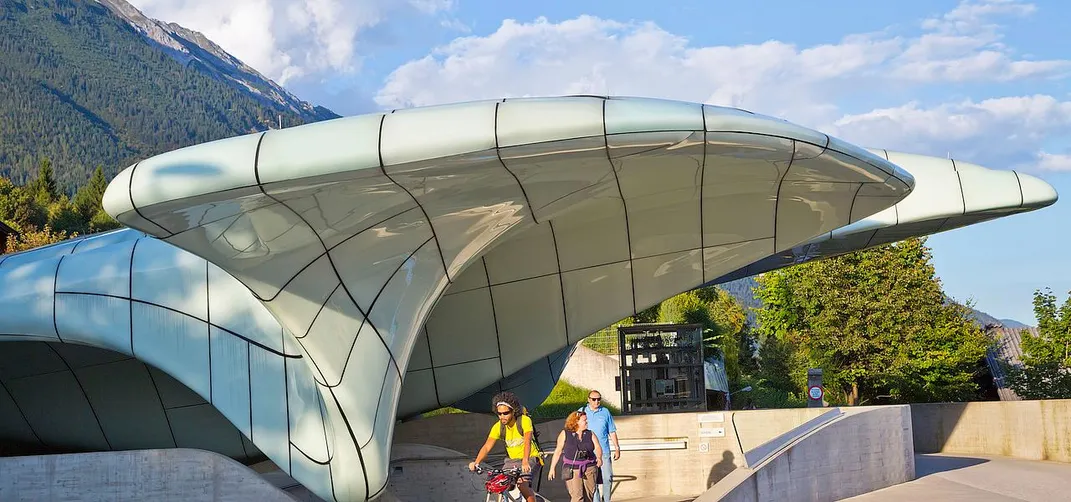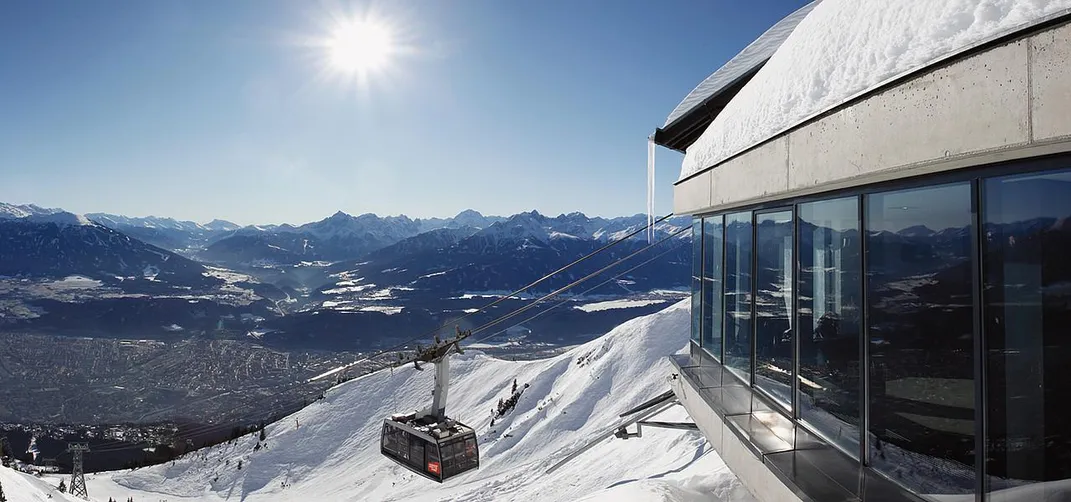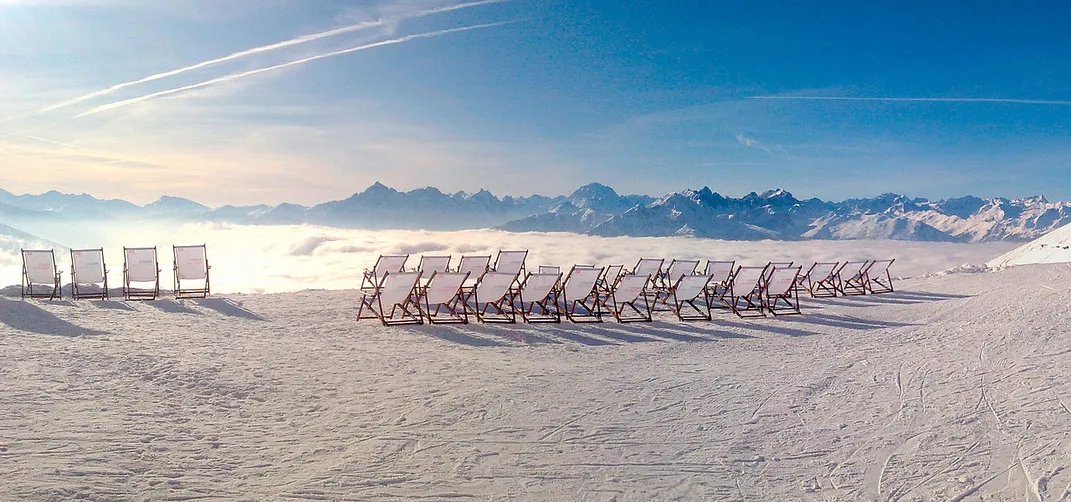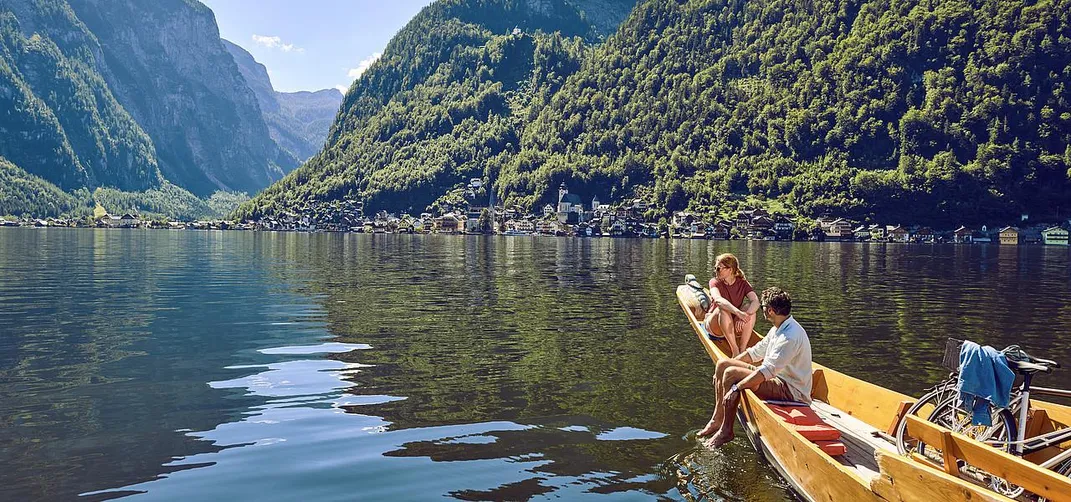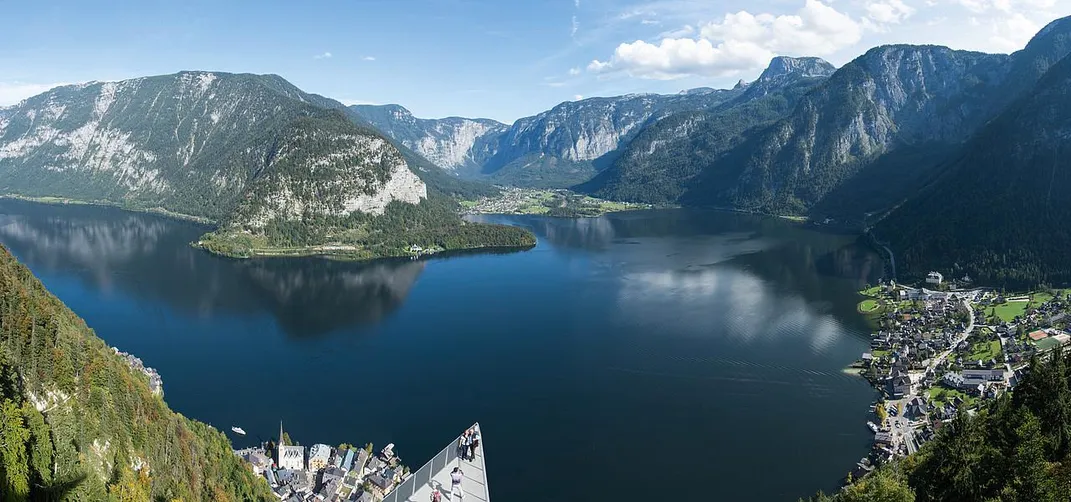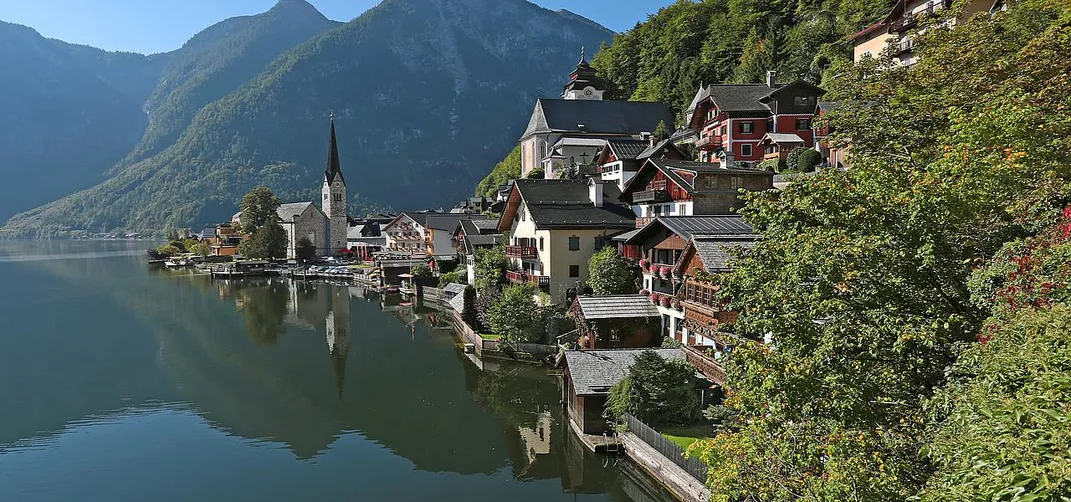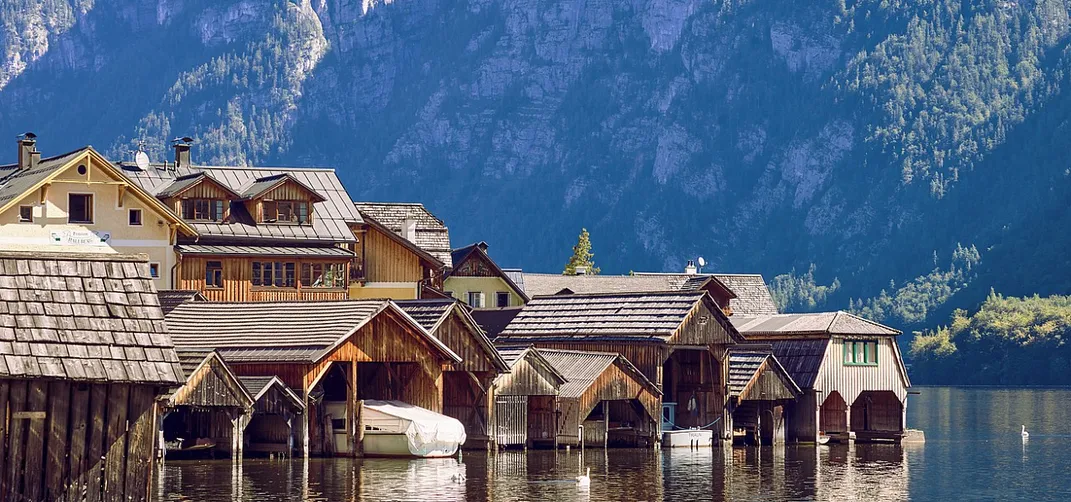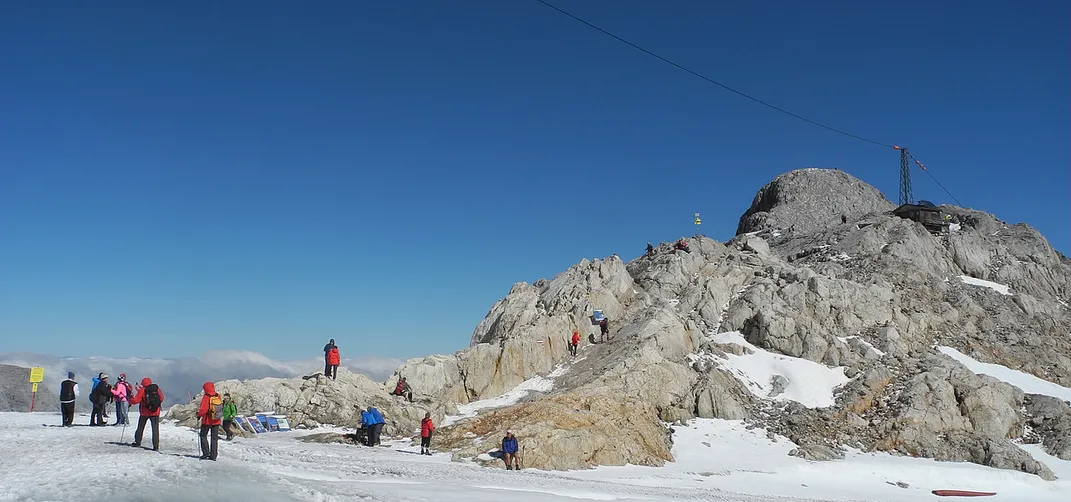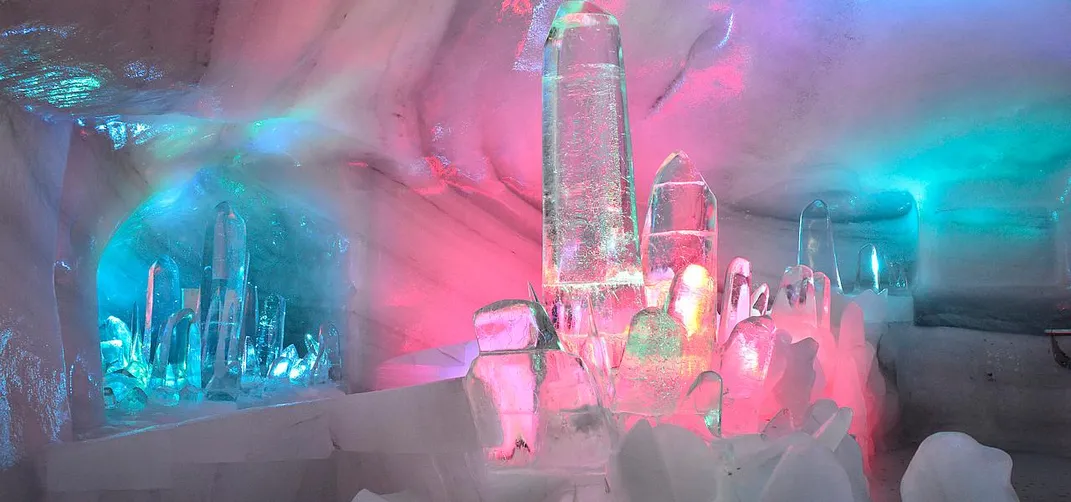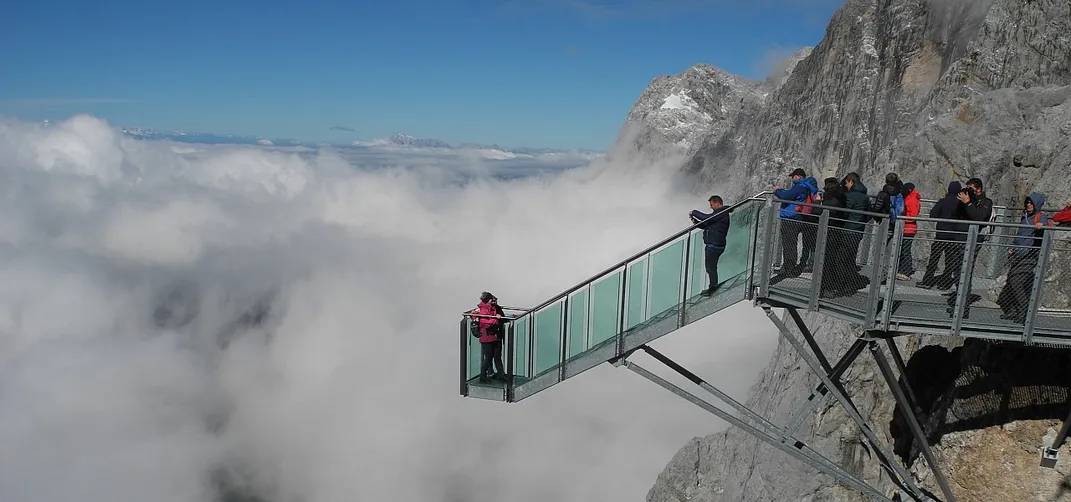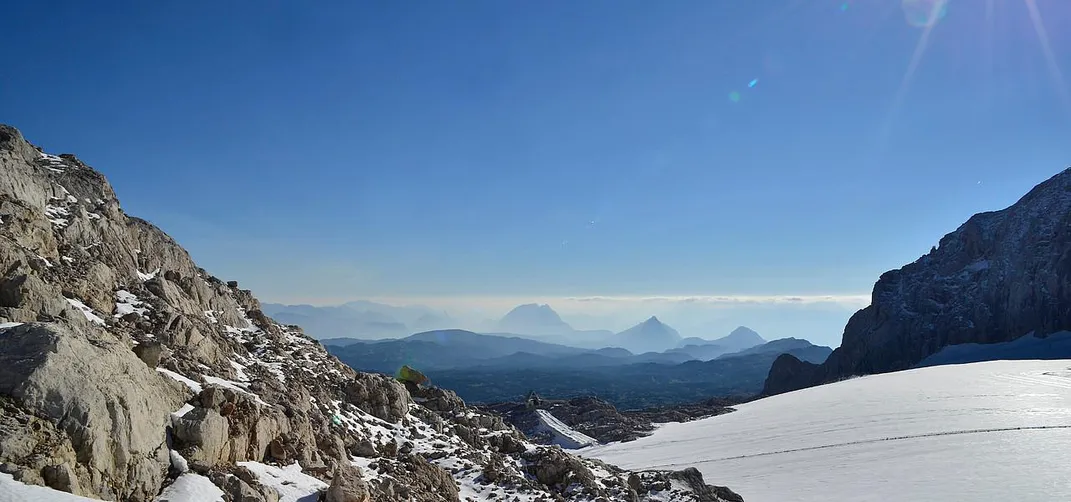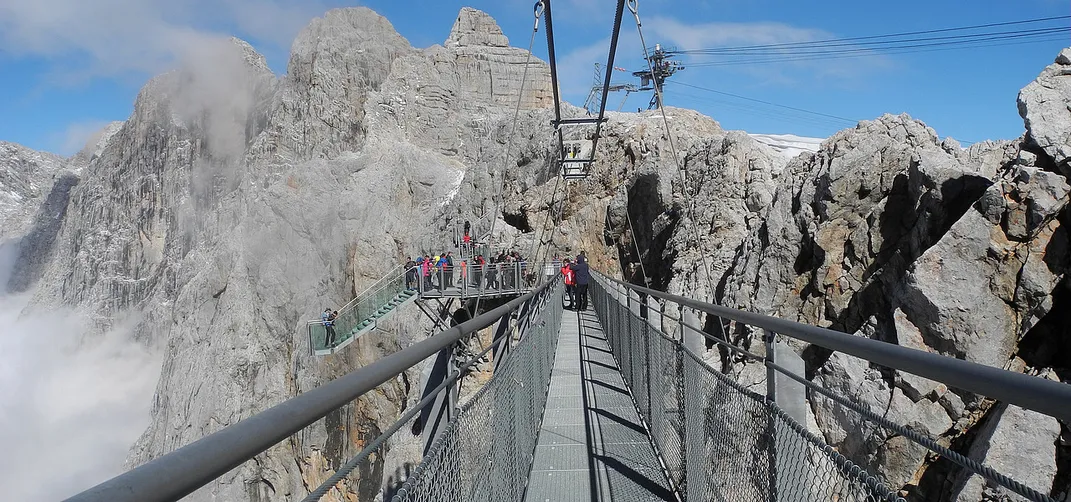From remote, wild valleys to rushing waterfalls and sparkling blue ice caves, Austria’s landscape is as diverse as it is jaw-dropping. Its scenery inspires exploration at every turn, and there are countless ways to get close to nature, from panoramic cable cars to world-class ski slopes to Europe’s highest suspension bridge. Fuel your wanderlust now with these 10 awe-inspiring locations.
1) Kaisertal: the valley without cars
Bordered by the quiet Kaiser mountains and dotted with remote Alpine inns, Kaisertal Nature Reserve is a well-kept secret. Only 39 people claim to live here, and visitors must leave their cars at the nearby town of Kufstein, since no roads lead through the valley. In 2016, Austrians voted the Kaisertal to be the most beautiful spot in the country. In the reserve, enjoy views of the imposing 13th-century Kuftsein Castle and surrounding peaks with nary anyone in sight. Be sure to stop by the Alpengasthof Pfandlhof and Veitenhof inns and enjoy generous cheese spreads or handcrafted schnaps. In the afternoon, take a ride at the nearby Fohlenhof Ebbs stud barn, the cradle of the Haflinger horse breed. Managed by the oldest breeder in the business, it features a museum and outdoor riding space.
2) The mythical Green Ring circular hiking trail
Running through Lech-Zürs am Arlberg is an enchanting, circular trail known as The Green Ring. Along the way, encounter hidden installations and sculptures depicting giants, wizards and witches from Austrian folk tales. Journey up to the Rüfikopf by cable car, gaze out over secluded Zürsersee Lake or picnic in the mystical "Sagenwald" forest of fables and let nature bewitch you. To truly experience this fairytale, stay in the wooden bivouc at the foot of Bullhole Head for a night, and wake up to panoramic views.
3) Arlberg: the cradle of alpine skiing
Located high in the Alps of western Austria, Arlberg is often referred to as the “Cradle of Alpine Skiing.” With over 100 years of skiing tradition, it is Austria’s largest and most historic ski resort. Slopes blanketed in snow stretch for miles, and it is sometimes hard to know where the mountain ends and clouds begin. Purchase an Arlberg Ski Pass for access to 87 cable cars and lifts throughout the region. More experienced skiers can test their endurance on “The White Ring,” a legendary 14-mile ski circuit linking several villages.
4) Styria’s rolling vineyards
Less than an hour’s drive from Graz lies the rolling vineyards of Styrian wine country. Stop into a local wine tavern and enjoy fresh bread, as well as brettljausn—platters of smoked meat, cheese, spreads and pickles—along with an assortment of wines. A favorite is the Schilcher, made as spicy rosé or sparkling wine. Round out the day with a visit to one of the many pumpkinseed oil mills or head to a restaurant back in Graz and enjoy local wines with dinner.
5) Central Europe’s tallest waterfalls
Passing through Hohe Tauern National Park, you can't miss the Krimml Waterfalls. The tallest in Central Europe, their sheer power amazes and merits an up-close look. Approaching the falls from the village of Krimml, you will first see Krimmler Ache, a glacial creek plunging over three tiers. Keep walking up to 4,216 feet, and you’ll arrive at the powerful Middle Falls. Here, take a break at Schönangerl Restaurant before ascending another 1.5 hours to the top of the falls. If you have time left over, head to the adjacent WasserWunderWelt, an aquatic theme park exploring water in its countless forms.
6) The world's largest ice caves
Discovered in 1879, Eisreisenwelt is the largest ice cave system in the world. Thanks to unique air circulation conditions in the cave, spring melt water freezes into majestic natural ice sculptures and formations known fondly as the "Ice Giants." From May through October, you can strap on a headlight and explore this otherworldly scene. Your first stop will be the Posselt Tower stalagmite in the Posselt Hall, followed by the Great Ice Embankment, rising an impressive 75 feet. Keep an eye out for the stalactite formation known as the Ice Organ.
7) Stunning Hohe Tauern National Park
Hohe Tauern National Park is the largest nature reserve in the Alps. It counts 266 mountains that stand over 9,800 ft, 551 lakes, and about 250 glaciers. The best way to experience Hohe Tauern’s untouched expanse is by going to the visitor’s center in Mittersill and setting off on a hike with one of the knowledgable park rangers. You’ll discover rare Alpine flowers, ibex, marmots, eagles and vultures in an unbelievable landscape. Pick wild blueberries and herbs in sweeping meadows, and enjoy the views from one of Hohe Tauern’s breathtaking summits.
8) Innsbruck’s vertigo-inducing Nordkette mountains
Innsbruck is known as the Capital of the Alps for a reason. The majestic Nordkette mountains surround the city and can be reached in 20 minutes by cable car. Take the funicular, followed by the Nordkettenbahn cable car, to Seegrube for fantastic views of the city. Continue on to Hafelekar station and hike 10 minutes to the summit at 7,500 feet. From the summit, you’ll see Austria’s largest nature park to the north, and Innsbruck to the south. On the way down, enjoy a traditional Austrian lunch and panoramic views at the Seegrube restaurant, and stop at Alpenzoo, Europe’s highest-altitude zoo.
9) World Heritage Site: Hallstatt
Nestled in the heart of the Sazkammergut lake region, Unesco-listed Hallstatt is Austria’s oldest and perhaps most photographed village. Framed by mountains and the glassy water of Hallstätter See, it boasts a 5,000-year old history. No cars are allowed through the village, preserving its pastoral qualities. Though beautiful at ground level, some of the best views of Hallstatt are from above. Take the cable car from Obertraun across the lake and walk to the “5 Fingers” platform, which extends like an outstretched hand 1,640 feet above the lake. Here, soak up views of the surrounding waters and Styria’s highest mountain, the fabled Dachstein. From the cable car, you can also reach Salzwelten Hallstatt, the world’s oldest salt mine. Opt to enter the mine via slide.
10) The ancient Dachstein glacier
Covering Styria’s highest mountain in a layer of blue frost, Dachstein Glacier is a sight to behold. From the lush valley at the foot of the mountain, take a panoramic cable car up 3,000 feet and watch the scenery transform into misty clouds and sheer cliffs. If you’re feeling adventurous, ride on the roof of the gondola surrounded by a secure balcony. Once at the glacier, walk out onto the "Staircase to Nowhere" skywalk, and look down through a glass panel at the jagged edges of the Dachstein ridge, or cross the metal lattice suspension bridge to Hoher Dachstein. At 1,312 feet, you’ll feel suspended in air. After you've finished taking in the view, step inside the Ice Palace and wander past its colorfully lit ice sculptures.
* * *
Discover more incredible landscapes in Austria.
* * *
Explore Austria’s Most Unique Hotels
 Explore Austria’s Most Unique Hotels
Explore Austria’s Most Unique Hotels
10 Ways to Awaken your Tastebuds in Austria
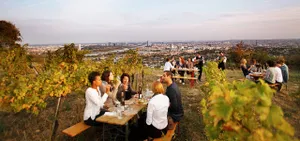
12 Reasons Why You Need to Make Austria Your Next Travel Destination

/https://tf-cmsv2-smithsonianmag-media.s3.amazonaws.com/filer/d4/6f/d46f86f0-75e0-4feb-bfee-54ac44179afc/austria-banner-10-landscapes-new-use.jpg)
